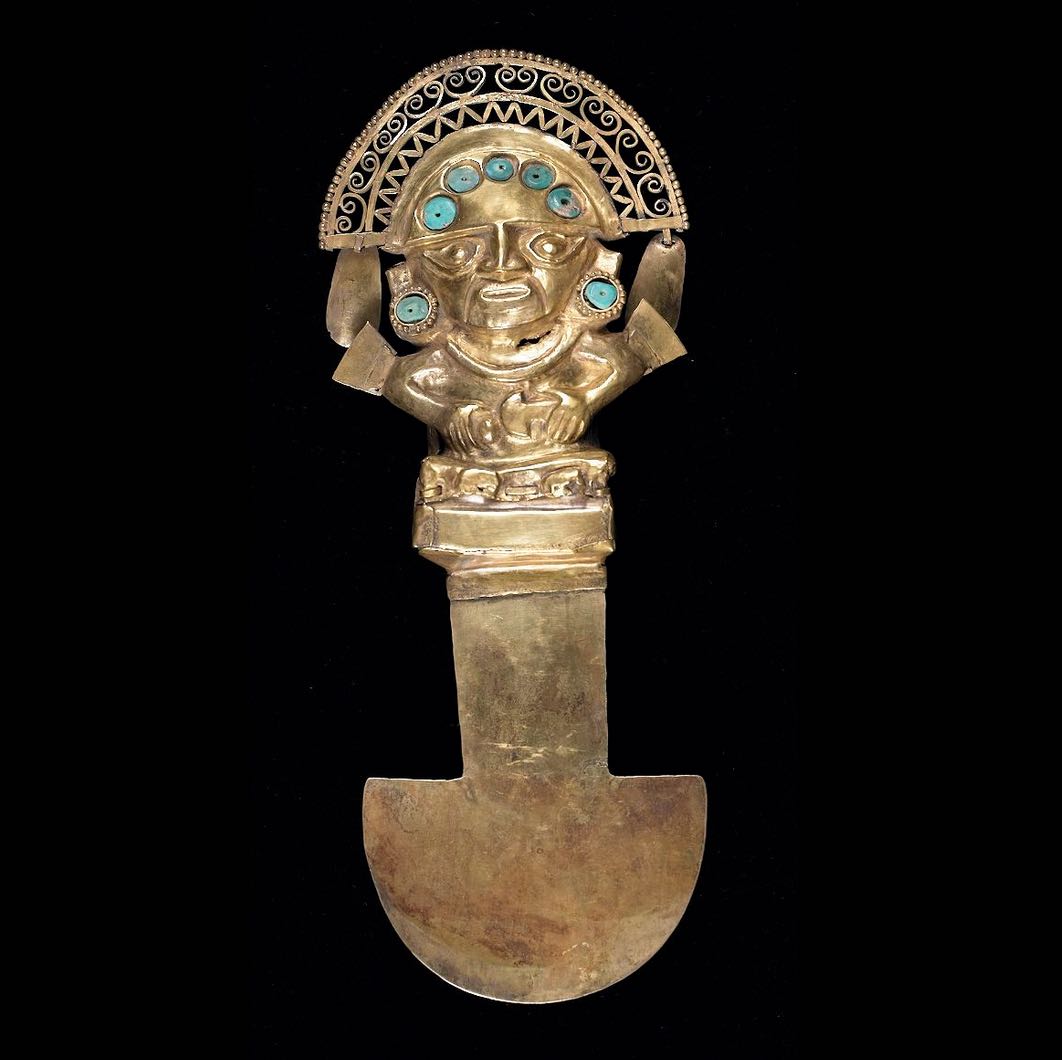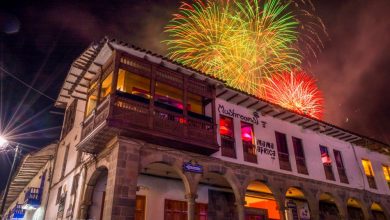Intersections: From Peruvian Sacrifical Knife to Fine Luggage, Tumi

Golden Tumi from the Sican Culture (Sean Pathasema/Birmingham Museum of Art)
The weather has turned decidedly winterish in Utah. There are about 18 inches of snow in my back yard along with a chill that keeps it from melting. Besides skiing (which there is much excitement about in my house), the other great excitement of winter is the celebration of Christmas. How does an Utahan celebrate Christmas? SHOPPING! So, off I went to the City Creek Mall in Salt Lake City.
Stepping out of the second story into the cold corridor and courtyard I spied a distinctly Peruvian name on a store. Tumi.
Did they sell knives? Ceremonial knives? That is after all what a tumi is in Peru.
It is “made of bronze, gold, silver or copper and usually made of one piece. Its handle has a rectangular or trapezoidal shape, its length varies but it always exceeded the width of a hand. At the bottom there is a sharp semicircular blade.” (1) It is also a national symbol in Peru. It is hung on people’s walls for luck. But it wasn’t always so decorative.

During the time of the Inca, the Inti Raymi was observed by the sacrifice of a black llama. After using a Tumi to cut open the chest and hold the heart up to the sun, “their internal organs would be observed to foretell the future and later they were incinerated.”(ibid). The blade dates back to earlier times when it was used not only in ceremony, but also in surgery. Human heads were opened using the blade for reasons that we are not quite sure of today. It is speculated that the cranial surgery was used to ease not only physical malaise but also for physiological ills as well.
I had to stop in and see what was in the warm confines of the store.
Once inside, I found a helpful shop person who showed me her wares. They were not knives, but travel gear.
There was soft-sided luggage made for the serious traveler. I looked over the leather goods as well as their new ballistic nylon bags and wondered afresh how a store that specialized in travel bags came to be named Tumi.
I asked the store clerk, Juanita. She told me that the original owner had gone to Peru. It seemed a fascinating intersection.
How did the Tumi knife become associated with a line of leather goods? That took a little more searching. It seems that when Tumi founder Charlie Clifford worked with the Peace Corps in Peru during the late 1960’s he grew to appreciate the handicrafts of the Peruvian people.

According to Mr. Clifford,
“I heard about a Peace Corps program…went to Peru, where I worked with small businesses, from 1967 to 1969. …I learned great lessons about running a business—starting with humility. I decided to do something entrepreneurial. Peru was known for handicrafts, which I loved, so I talked to a friend about setting up an import company. An importer I had worked for owed me some money—and paid me in leather tennis bags. Selling those bags provided my start-up capital.” (3)
The company logo was a Tumi. It was printed on the fabric linings of the bags and still is embossed into leather. The leather bags sold very well. Clifford added additional lines that included the ‘ballistic nylon’ and even holds a patent for roller wheels on bags. He targeted an upscale market and had to provide excellent quality.
Today, you can find Tumi’s for sale online besides in brick and mortar stores. They are beautifully worked, showing the talent of Peruvian handwork. So while I am busy shopping for Christmas, I may pick up a Tumi, for travel or for luck.
(1)http://www.discover-peru.org/tumi-knife-culture/
(2)http://www.discover-peru.org/inca-religion/
(3)http://www.inc.com/magazine/20110501/how-i-did-it-charlie-clifford-tumi-luggage.html





